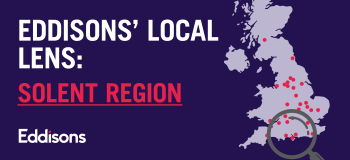24/03/2024
Insights
New legal requirements for increasing the biodiversity of development projects are set to increase the upfront costs of development applications and could adversely affect the delivery of much needed residential & commercial schemes.
That’s the concern expressed by planning professionals at Eddisons in explaining how the new 10 per cent Biodiversity Net Gain (BNG) changes – which came into effect last month (12th February) – will work in practice.
From 12th February, in submitting applications for major residential or commercial developments, applicants will have to demonstrate how the scheme will ensure a minimum of 10 per cent net gain in the biodiversity mix of the development site area.
Or, where this cannot be achieved, applicants will have to justify it and provide a net gain outside the development site, or purchase off-site biodiversity units on the market or biodiversity credits from central government.

For residential schemes, major developments for these new BNG purposes are defined as 10 or more dwellings or a site of 0.5 hectares or above where the number of dwellings is not stipulated.
If a building or buildings create 1,000 sq m of floor space or more, or if the site has an area of 1 or more hectares for example, a commercial development, this will also require the minimum10 per cent BNG to be demonstrated.
There are some exemptions to the new BNG rules. For example, householder development, and self-build or custom-build development of no more than 9 dwellings.
Eddisons advises that the level of detail now required to demonstrate BNG goes well beyond that supplied in a Preliminary Ecological Appraisal (PEA), which still accompanies development applications.
Previously, a full landscaping scheme would have been a matter for a post-application planning condition. However, this is now required as part of the application because it is the only way to calculate the biodiversity points created by new habitat and, thereby, demonstrate the required net gain has been achieved.

Kate Wood, Planning Director, Eddisons, explains, “Our concern is that detailed work to meet the new 10 per cent BNG requirement through demonstrating landscaping & ecology outputs at the application stage significantly adds to the upfront costs of an application.
“While biodiversity net gain has been required prior to the recent changes, there wasn’t a legal 10 per cent requirement in force across England. Leaving this work until permission had been granted, previously, meant that applicants could manage the financial risk in avoiding cost if their application was not approved as submitted.
“If the application is withdrawn or refused, or if any change to the scheme is required through the normal process of negotiation and amendment, then there are further costs to meet the new 10 per cent BNG requirement. The alteration to the timing of the requirement for this information adds to the risk.
“While compliance is costly, failure to do so will only ramp-up costs and delay the delivery of schemes.
“We always advise potential applicants to seek professional planning advice at the earliest possible stage in considering development and these latest BNG requirements only serve to reinforce this advice.”
For more information on the new 10% BNG requirmenet or other planning regulatory changes which include the changes to class MA, General Permitted Development Order for the conversion of commercial to residential use which came in to force earlier in March, please contact Eddisons planning team, or email our team at kate.wood@eddisons.com.





